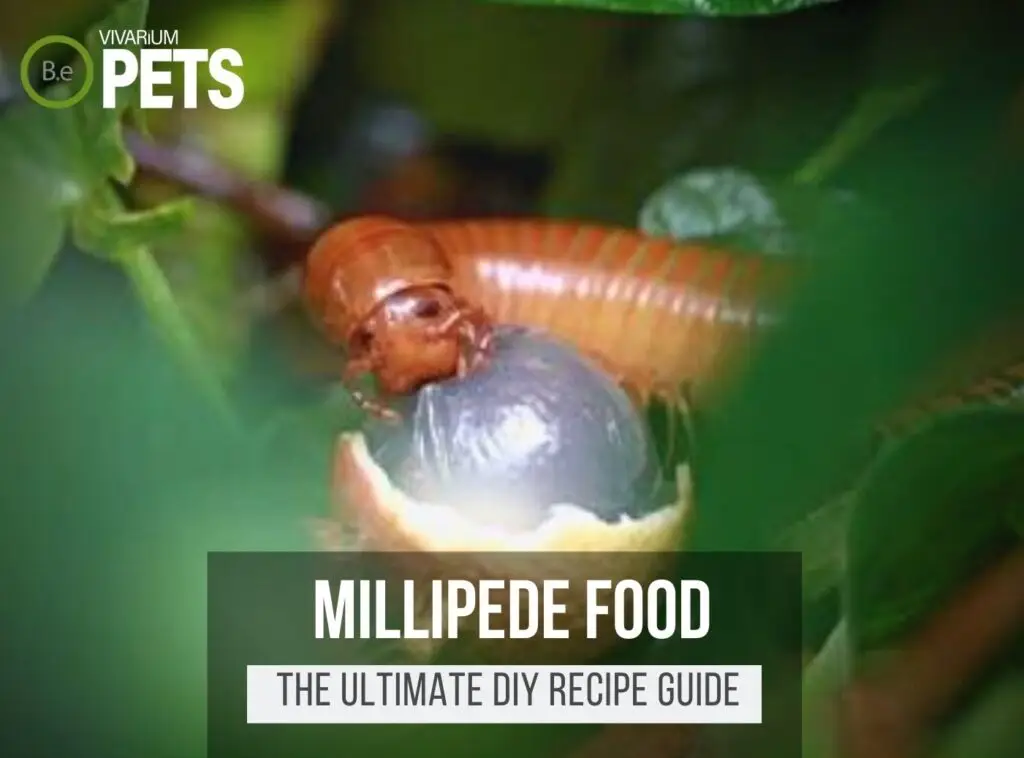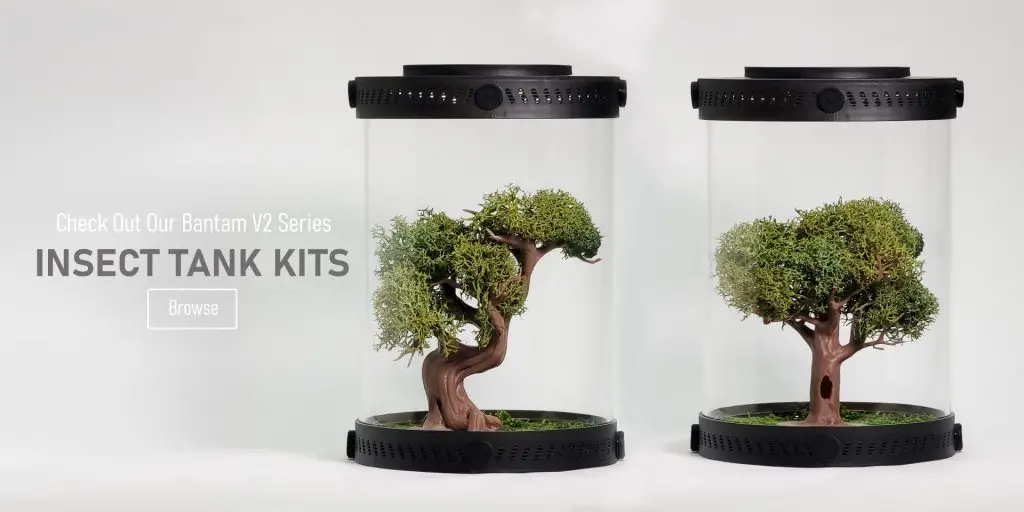The Ivory Millipede, also known as Chicobolus spinigerus, is an incredibly intriguing species of terrestrial arthropod found in parts of the United States.
These hardy little critters have a unique natural charm and can make fascinating additions to any home.
In this guide, you’ll find a wealth of information on how best to care for these giant millipedes, including tips on setting up their enclosure, handling, dietary needs, and more.
| Characteristics: | |
|---|---|
| Common Name | Ivory Millipede, Florida Ivory Millipede |
| Family Name | Spirostreptidae |
| Scientific Name | Chicobolus spinigerus |
| Use | Cleaning, Aerating Soil, Pets |
| Temperament | Non-aggressive |
| Lifespan | 5-10 Years |
| Diet | Detritivore |
| Adult Size | 8.89 cm |
| Breeding Type | Egg Layer |
| Care Level | Easy |
| Minimum Tank Size | 10-15 Gallons |
| pH | 7.0-8.5 |
| Hardness | Moderate |
| Temperature | 70-80°F |
Table Of Contents:
ToggleWhat Are Ivory Millipedes?
Chicobolus spinigerus belong to the family of Spirostreptidae and are commonly referred to as Florida Ivory Millipedes
These creatures are nocturnal scavenger feeders and are most commonly found in wet and decaying forests across parts of North America.
It gets its name from the ivory-white coloration which can often be observed on their bodies.
As the millipede moves and crawls, the segments together create an undulating snake-like movement, waves of which can be seen in the Ivory Millipede’s namesake.
Create an ideal habitat for your millipede with our Customizable Millipede Enclosure Kits, which include everything you need to get started.
What Do Ivory Millipedes Look Like?
Chicobolus spinigerus is characterized by its tan to almost white color and its distinctive “stripe” pattern along its body.
These millipedes can grow up to 8.89 cm in length and about 0.25 inches or 0.5 cm in width.
They have smooth, segmented bodies with around 58 legs and two pairs of antennae that are about the same length as the body.
They also possess a pair of short, stubby antennae near the end of the body that gives off a distinct smell and taste.
With their cute little pair of eyes, they look quite charming.
Benefits Of Using Ivory Millipedes
Ivory Millipedes are ideal for use in vivariums such as paludariums and bioactive terrarium setups.
They provide a natural aesthetic for these living habitats and also fulfill an important role in the overall system.
Firstly, they aid in important aspects of soil management, breaking down decaying organic material and aerating the substrate.
This helps to reduce the chances of fungal and bacterial growth that can negatively impact the health of other inhabitants in the vivarium.
Secondly, they are an ideal source of food for other vivarium inhabitants, such as lizards, frogs, and turtles.
Lastly, they help to maintain a balanced ecosystem in the environment and facilitate the cycling of nutrients.


Ivory Millipede Facts
Chicobolus spinigerus are small, hardy terrestrial arthropods native to the southeastern United States.
These omnivorous critters prefer a diet of decaying plant matter, fresh leaf litter, and other organic materials found in the wild.
They are generally gentle and easy-going, living for many years when cared for properly, and can be bred quite easily in captivity.
Habitat
The Ivory Millipede is native to the southeastern United States from Mississippi to Kentucky, as well as parts of Florida, Georgia, and Alabama.
They thrive in wet and moist habitats, such as humid forests and wetlands.
These millipedes prefer to live beneath rotting logs and in the soil, in humid and shaded areas.
Replicate their natural habitat perfectly with our Bioactive Millipede Substrate Blend, designed to provide the ideal moisture and organic content for your millipedes.
Diet
In their native habitat, Chicobolus spinigerus were primarily decomposers, feeding on dead plant material.
They feed greatly on rotting leaves, plant detritus, mushrooms, and other fungi.
Due to their small size, Ivory Millipedes require frequent feedings.
Temperament
The Ivory Millipede is generally a very calm species, which makes them a great pet for those wanting to observe their behavior up close.
They tend to be less active during the day, preferring to shy away when there is a lot of movement or sound.
When handled carefully, these millipedes are not typically aggressive and are not likely to bite.
When it comes to other animals and insects, Chicobolus spinigerus is surprisingly tolerant.
They are also relatively tolerant of other millipedes, although they may show a bit of aggression if they feel threatened.
Lifespan
Ivory Millipedes typically live for up to 5-10 years with optimal care.
As C. spinigerus mature, they will molt several times throughout their lives.
After mating, the female will lay a clutch of up to sixty eggs, which can take several weeks to hatch.
The eggs are usually laid in soil, after which the young millipedes will become independent and have to hunt for food.
As they grow, they’ll go through several stages of molting.
Once they reach adulthood, their life span will depend on the quality of care and nutrition they receive.
Breeding
Ivory Millipedes have a unique multi-stage reproductive cycle that begins with courtship.
The male will vibrate its antennae and secrete pheromones to attract female mates.
After successful mating, the female will lay eggs in the soil of the enclosure.
The eggs will hatch in a few weeks and the newly hatched juveniles will go through several stages of growth before becoming adults.
Where To Find Ivory Millipedes
In the wild, Ivory Millipedes can be found in damp and humid areas including woodlands, vegetable patches, and gardens.
Before attempting to collect millipedes from the wild, it is important to check local laws and regulations.
If you’d rather purchase Chicobolus spinigerus, you can find captive-bred specimens online or in some pet stores.
It’s important to research sellers and ensure they have a good reputation for selling healthy millipedes.
When selecting your millipedes, check for discolored patches, lesions, and an overall unwell appearance.
Ivory Millipede Care
The best way to care for Chicobolus spinigerus is to make sure to meet all of their needs.
Provide them with a safe and comfortable enclosure with the appropriate temperature, humidity, substrate, and decorations.
Feed them a varied diet of quality food, supplements, and fruits; handle them gently; and watch out for any common health issues.
By understanding their needs, you can ensure that these amazing little creatures have a long and happy life.
Tank Requirements
Ideally, Ivory Millipedes should be housed in a 5-10 gallon tank or one of the commercially available vivariums designed specifically for millipedes.
The terrarium substrate should be a 4- to 5-inch layer of coconut coir and aged leaf litter, be used with a pH of 6.5-7.5, and hardness below 10 kH.
The temperature of the enclosure should be kept between 72-82°F during the day and should not drop below 65°F at night.
Finally, the enclosure should have low terrarium lighting and be equipped with a secure lid as well as plenty of hiding spots or decorations.
What Do Ivory Millipedes Eat?
Feeding your Ivory Millipedes is important for keeping them healthy and happy. Here are a few tips for feeding Chicobolus spinigerus:
- Most Ivory Millipedes are omnivores and need a balanced diet that contains both plant and animal matter.
- Offer your pets a variety of food items, including vegetables, fruits, algae, and various insect larvae.
- Feed your millipedes a few times each week, depending on their size and appetite.
- Avoid any foods that may cause digestive problems, such as animal products or citrus fruits.
- Provide your pets with fresh food and replace spoiled food items immediately.
Things you can feed your Ivory Millipedes:
- Vegetables such as carrots and lettuce
- Fruits such as apples and bananas
- Algae such as spirulina
- Insect larvae such as mealworms and waxworms
- Plant matter such as leaves and bark
- Small amounts of cooked meat such as chicken or fish
If you’re more of an avid hobbyist like myself, check out my ultimate DIY Millipede food guide. I explain the best foods and my favorite recipe in more depth.
Best Tankmates For Ivory Millipedes
Chicobolus spinigerus can be kept with other animals, however, it is important to consider the compatibility between species and enclosure requirements.
Invertebrates such as snails, slugs, isopods, springtails, and earthworms can provide food and create interesting natural dynamics in a shared ivory millipede habitat.
Conclusion
Caring for Chicobolus spinigerus can be one of the most rewarding pet-keeping experiences.
With the right knowledge and accommodations, your little Ivory Millipedes can live a long, healthy, and active life.
We hope this guide has provided you with enough information on this unique species to confidently provide a safe and stimulating habitat for your millipedes as pets.
Create the ideal habitat for your millipedes with our species-specific soil mixes and Insect Enclosure Kits. These products provide everything you need for a successful and thriving millipede colony.
Frequently Asked Questions
Florida ivory millipedes are not poisonous to humans, but their secretion can cause skin irritation and staining of clothing.
It is important to avoid handling them and to wash any affected areas immediately if you come into contact with their secretion.
Ivory millipedes can make good pets as they are relatively easy to care for and have a docile temperament.
However, it is important to handle them with care to avoid coming into contact with their secretion, and they require proper housing, nutrition, and care to ensure their health and well-being.
Ivory millipedes can live for several years in captivity, with some individuals living up to 7 years or more.
Their lifespan can vary depending on factors such as temperature, humidity, and diet. With proper care, they can live long and healthy life as pets.
Florida ivory millipedes, also known as Chicobolus spinigerus, can grow to be around 8cm in length.
However, the size can vary depending on factors such as age, diet, and environment.
As they grow, they will molt their exoskeleton, which can leave behind a shed skin that is similar in size and shape to the millipede.





